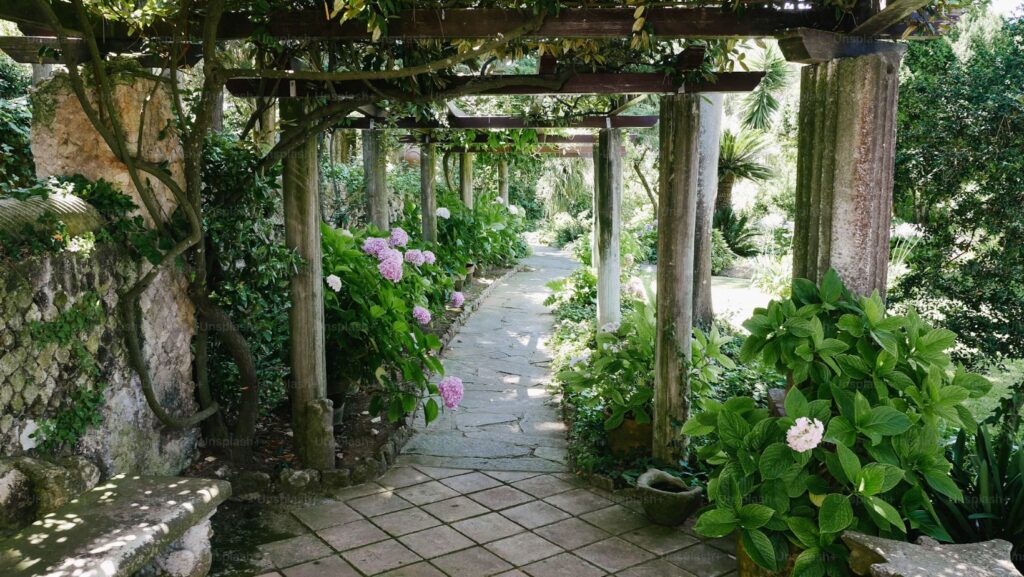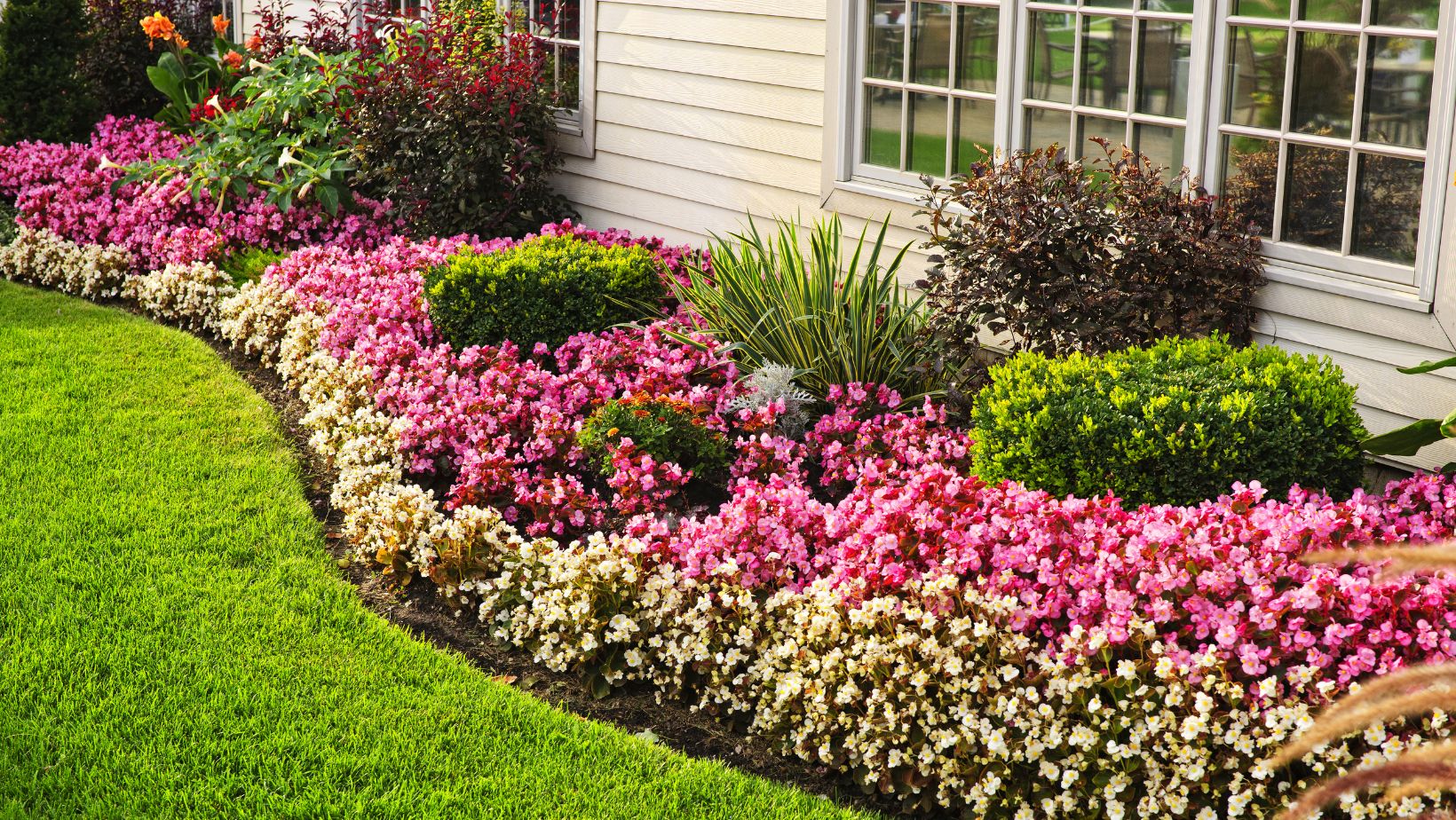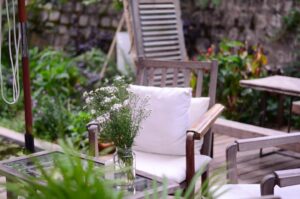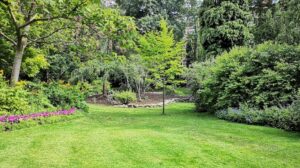
Lawn and garden edging is one of the simplest yet most effective solutions to significantly enhance the aesthetic appeal of your garden. Lawn and garden edging not only defines boundaries, creates clear sections, and adds visual appeal, but also serves a functional purpose by preventing soil erosion and keeping weeds out of your lawn. Whether you are landscaping a large area or simply trying to create a neat, beautiful flower bed, edging is an important, key element in maintaining a clean, organized space. In this article, you will learn about the importance of lawn and garden edging, the different materials available for edging, and additional, key benefits of proper lawn care methods.
What is the Importance of Lawn and Garden Edging?
Garden edging significantly enhances landscape design, allowing homeowners to have clearly defined areas for lawns, patios, flower beds, gardens, and driveways. Garden edging emphasizes important things like trees, and various elements of your garden and improves the overall organization of outdoor spaces. By using it, you can achieve a sophisticated and unified look for your space.
Lawn and garden edging is a vital solution for keeping different areas of your yard looking neat and organized because without a clear separation, lawns, and garden areas can easily merge into each other, creating a messy, unkempt look. Edging helps establish clear boundaries, reliably ensuring that grass and soil do not spill onto the lawn.
Lawn and garden edging play a crucial role in functional landscape design. They control the current level of soil erosion, reduce weed growth, and make garden maintenance easier. By using the right type of edging, you can prevent soil from washing away during heavy rainfall, which can be especially useful in gardens with a slope. Lawn and garden edging reduces the need for constant trimming or mowing of the grass around the edges, saving you time and effort on lawn maintenance. You can use edging to create visually appealing flower beds, vegetable plots, paths, or even water features, giving your garden an extra level of beauty, dimension, and structure. When done correctly, edging can enhance the beauty of your plants, making them the focal point of your garden.
Materials Used for Lawn and Garden Edging
There is a wide range of edging materials available, each with its key, undeniable advantages, and certain disadvantages. The choice of material largely depends on the desired look, the style of the garden, and your current budget:

● A popular edging material is metal. Steel and aluminum are two common options, both of which are strong, durable, and highly resistant to rust. These materials have a modern, sleek look that is especially suitable for modern gardens. Metal edging is also great for holding soil in place and preventing grass from creeping into your beds;
● Another popular and fairly common material for borders is wood. Wood edging offers a more natural look that is well suited to cottage style or traditional gardens. Wood can withstand the elements and last for many years, although it may require some maintenance, such as re-sealing every few years to prevent rot. Wood edging is a versatile option that can be easily cut to different lengths, allowing you to create custom designs;
● Brick or stone is a more durable option, adding a touch of elegance and sophistication. Stone or brick edging provides a permanent, durable border that can stand the test of time. The aesthetic value and long-term durability make it a worthwhile investment for many homeowners. These materials are ideal for gardens that experience a lot of foot traffic, as they can withstand the weight of people walking on them;
● Plastic or rubber garden edging is often the choice for homeowners who want affordability and ease of installation. These flexible materials are lightweight, easy to bend, and shape into the desired position. While plastic or rubber garden edging may not have the same durability as stone or metal, this option can be a practical choice for smaller gardens. It is the perfect solution for homeowners who want an affordable way to define boundaries without the need for heavy installation.
Effective Tips for Installing Lawn and Garden Edging
Garden edging refers to the boundaries of a garden that are used to divide areas and define space for plants. It is a very popular practice due to its practical benefits. Edging makes it easy to organize garden space, giving homeowners complete control over what grows where. Garden edging also has aesthetic appeal and makes the garden look neater. Before installing garden edging, it is important to learn about the design features so that the garden edging is not only visually appealing but also helps keep your plants healthy. Garden edging can keep grass sprouts where they are not wanted, limit the presence of weeds in the garden, and help with the watering process, as the plants inside the bed do not have to compete as much for nutrients.
Installing garden edging is a relatively simple process, but it does require careful planning and execution to ensure that the results are both functional and visually appealing. The first step in the installation process is to mark the edges of the bed. Once the markings are clearly defined, you can begin digging a trench around the edge. The depth of the trench should be approximately 3-4 inches, depending on the type of border you plan to use.

Next, you can begin laying the material in the trench. If you are using brick or stone, place the materials as close together as possible to create a continuous border. For metal or plastic edging, simply place the material in the trench and secure it with special elements to hold it in place. For wood edging, you may need to use screws or nails to attach the boards and ensure they stay in place.
Once the edging is installed, it is important to backfill the trench with soil to ensure that the edging is firmly in place. You can also use sand or gravel for extra stability. Once the edging is installed and firmly in place, you can smooth the soil around it and add, for example, various decorative stones to make the look even more beautiful.
Summarizing All of the Above
Garden and lawn edging is a simple yet effective solution for maintaining a neat and beautiful landscape, but don’t forget about the drainage system. An effective drainage system in your garden will provide numerous functional benefits, including preventing soil erosion, managing water drainage, and reducing weed growth. Whether you choose stone, metal, wood, or plastic, the right edging will enhance the visual appeal of your garden.
When choosing materials, it is important to choose one that suits your style, climate, and care preferences. Remember that garden edging is a long-term investment, which is why choosing durable materials will save you time and effort in the future.












